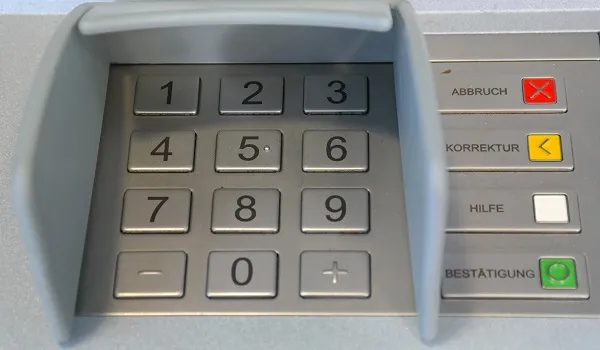Is entering your PIN in reverse at an ATM a valid emergency measure? Have you ever received that WhatsApp pass-on that offers a number of useful tips about things you never knew your mobile phone could do? I have, and I got it again just yesterday. One of the tips in there is the one about ATM PIN reversal, aka Reverse PIN Panic Code. Here is what the tip says:
ATM PIN Reversal
If you should ever be forced by a robber to withdraw money from an ATM machine, you can notify the police by entering your PIN # in reverse. For example, if your PIN number is 1234, then you would put in 4321. The ATM system recognizes that your PIN number is backwards from the ATM card you placed in the machine. The machine will still give you the money you requested but, unknown to the robber, the police will be immediately dispatched to the location. All ATM’s carry this emergency sequencer by law.
This information was recently broadcast by Crime Stoppers. It is, however, seldom used as people just don’t know about it.

At a cursory glance, it sounds like a great idea. Unfortunately, it is not true. No bank has implemented such a security measure, even though it was recommended to US banks years ago. As a matter of fact, the software to make this work, ATM SafetyPIN software, was even patented by Illinois lawyer Joseph Zingher. However, as said, it was never implemented.
The ATM PIN Reversal Hoax
Since then, this hoax of typing your ATM PIN in reverse when in a forced situation has been passed round and round. The truth is that if you type your ATM PIN in reverse, you will get an error from the ATM and no cash will be dispensed to you.
Also, no police or security agency will be notified. Of course, delay tactics can be helpful in such an emergency situation, so typing in a wrong PIN under that situation may not entirely be a bad idea. But doing so can go this way or that. Typing in a wrong PIN, which is what your PIN in reverse is, might earn you a few slaps and kicks from your abductors.
In Summary
- Typing in your ATM PIN in reverse will get you a “wrong PIN” error
- Typing your ATM PIN in reverse will not alert the police
This so-called tip, like many others floating around the Web and being passed along through WhatsApp and other digital channels, is an urban legend. It is not seldom used because people don’t know about it; it is seldom used because it is not true and just does not work. It is a hoax.
As someone else has mentioned, there are too many issues and exceptions to allow this work. For example, if your PIN is a palindrome (reads the same forwards and backwards), e.g., 4224, how do you reverse that? What if your PIN is made up of the same digits (e. g 7777). What is the reverse of that? A certain string of digits would have to be exempted from the PIN system for this “security” measure to work.
Stay alert and stay safe at the ATM, guys. Also stay calm and focused. Be good to everyone. If ever this reverse PIN panic code system is implemented on ATMs, your favourite digital superhero, Mister Mobility, will be here to update you. For now, typing your PIN in reverse is as good as singing, “Twinkle, twinkle, little stars. To infinity and beyond! *zooms off into the horizon*